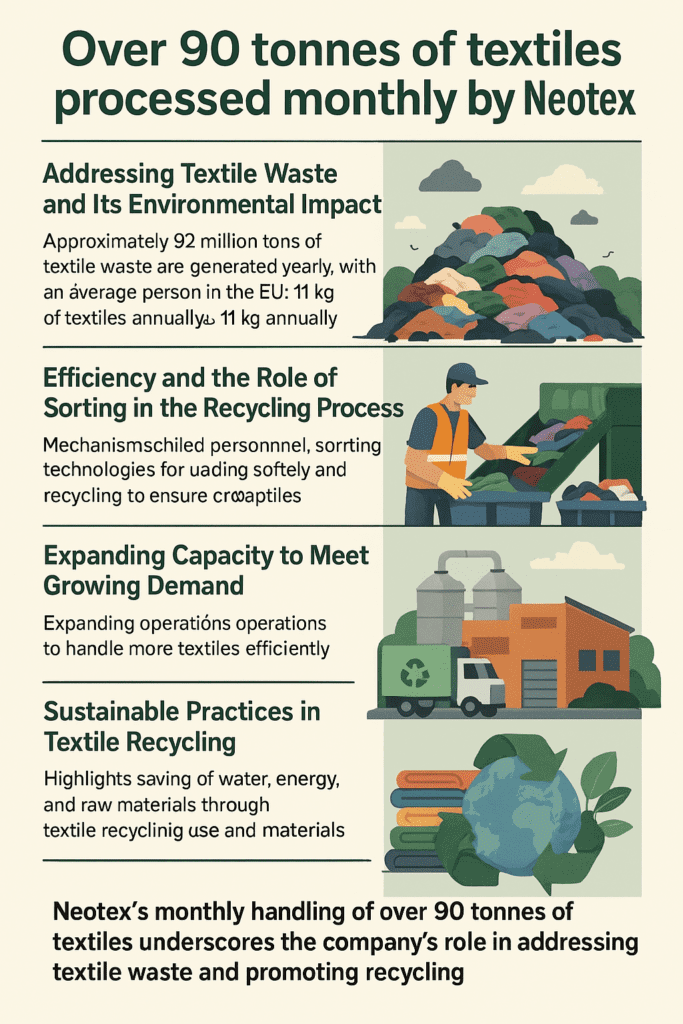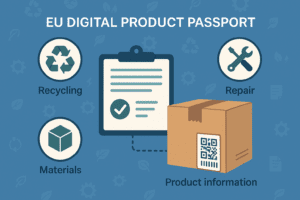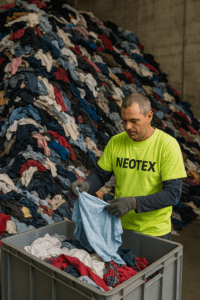Neotex processes over 90 tonnes of textiles each month, a volume that reflects the scale of its operations in the textile recycling industry. This high capacity plays an important role in addressing the growing issue of textile waste, which is a significant concern globally. By processing a substantial amount of textiles on a regular basis, Neotex contributes to reducing the environmental burden associated with textile disposal.
Addressing Textile Waste and Its Environmental Impact
The textile industry is one of the largest contributors to global waste. According to the United Nations, approximately 92 million tons of textile waste are generated every year, but only a small percentage of this waste is recycled into new materials. The rest is either discarded in landfills or incinerated, causing environmental harm in the form of soil contamination, greenhouse gas emissions, and water pollution. The average person in the EU is estimated to discard 11 kilograms of textiles annually, highlighting the magnitude of the problem.
Neotex’s monthly handling capacity helps mitigate the impact of this waste by processing textiles that would otherwise contribute to environmental pollution. The volume handled each month reduces the amount of material sent to landfills, offering an alternative to traditional disposal methods and supporting the recycling of valuable textile resources.
Efficiency and the Role of Sorting in the Recycling Process
The high volume of textiles processed by Neotex is made possible through a combination of skilled personnel and efficient sorting technologies. Proper sorting is a crucial step in the recycling process, as it ensures that textiles are categorized for either reuse, recycling, or repurposing into new products. By focusing on sorting textiles before the recycling process, the company maximizes the value of each material, conserving resources and reducing the need for new raw materials.
Sorting for reuse is particularly important in textile recycling, as it minimizes the need for full recycling, which can be energy and resource-intensive. Textiles that are suitable for reuse are separated and can either be repaired, refurbished, or redistributed in second-hand markets, further extending their lifecycle and reducing the overall waste generated.

Expanding Capacity to Meet Growing Demand
The need for effective textile recycling is expected to grow as global textile waste increases. Neotex is actively expanding its operations to meet this demand. This expansion involves increasing its recycling capacity through investments in new facilities and equipment, as well as exploring innovations in recycling technologies. The goal is to handle more textiles efficiently, thereby increasing the impact of recycling and reducing the need for virgin materials.
The expansion also includes improvements in the sorting and recycling processes, which can help to increase the proportion of textiles that are effectively reused or recycled. As recycling technologies evolve, more materials will be processed in ways that reduce their environmental impact, contributing to a more sustainable textile industry overall.
Sustainable Practices in Textile Recycling
Textile recycling plays an essential role in reducing the environmental impact of the textile industry. For every tonne of textiles recycled, significant amounts of water, energy, and raw materials are saved. For example, recycling polyester from used garments saves about 60% of the energy required to produce new polyester from petroleum. Similarly, reusing cotton and other fibers helps reduce the environmental strain caused by the agricultural and industrial production of new materials.
Neotex’s monthly handling capacity, which processes over 90 tonnes of textiles, contributes to these environmental savings. As the textile industry continues to face challenges related to waste and sustainability, companies like Neotex play an important role in closing the loop of the textile lifecycle and reducing the demand for new raw materials.





